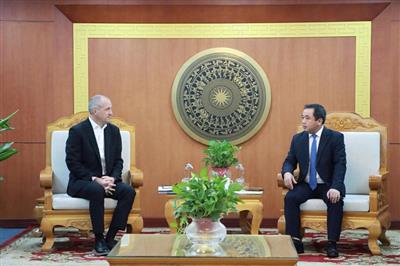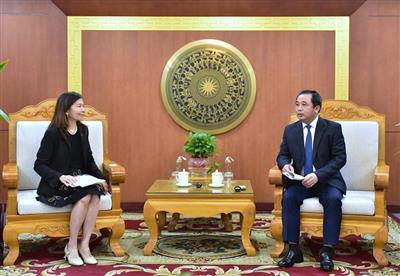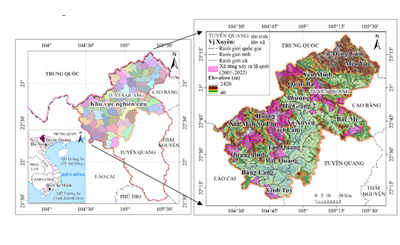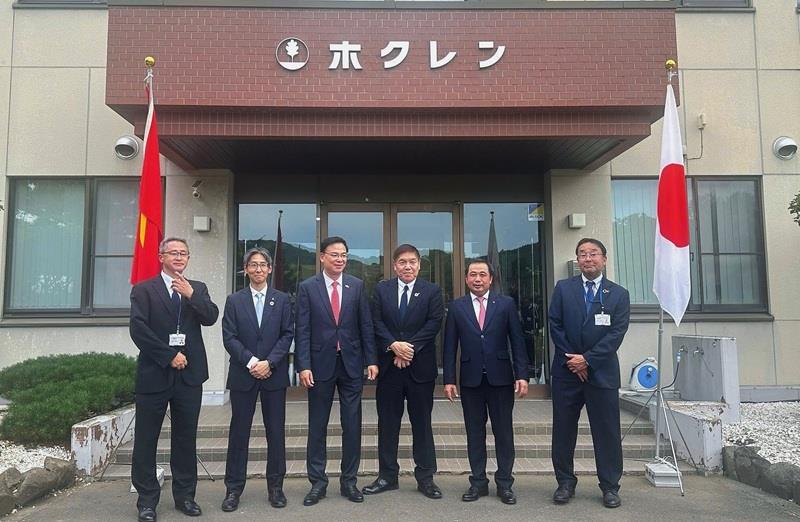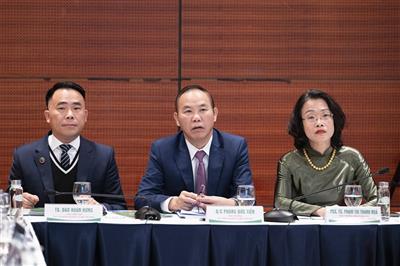
Strategic partnership drives bioenergy development: A new path for green and circular agriculture in Vietnam
19/06/2025TN&MTAs Vietnam accelerates its shift toward sustainable and low-emission agriculture, the working session held on June 18 between Deputy Minister of Agriculture and Environment Vo Van Hung and representatives from ENI Vietnam marked a strategic turning point. The collaboration between a global bioenergy leader and Vietnam’s agricultural sector promises not only to add value to farm products but also to foster the green transition, promote circular economy models, and build a zero-emission agricultural system.
A new momentum for green agriculture and bioenergy
During the meeting, Deputy Minister Vo Van Hung highly appreciated the ongoing cooperation between the Ministry of Agriculture and Environment (MAE) and ENI Vietnam, especially the recent signing of a Memorandum of Understanding (MoU) on developing green, sustainable, and low-emission agriculture. He affirmed that the strategic directions proposed by ENI align well with Vietnam’s vision of transforming its agricultural growth model—from traditional production to ecological agriculture, circular economy, and low-carbon farming.
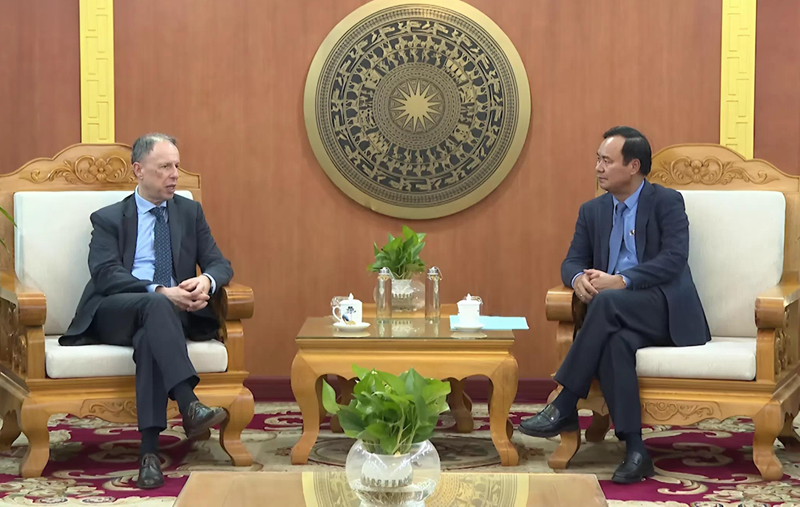
Deputy Minister Vo Van Hung met with ENI Vietnam on June 18 to advance bioenergy cooperation, marking a key step in Vietnam’s green agricultural transition
Mr. Luigi Ciarrocchi, ENI’s Director for carbon capture, utilization and storage (CCUS), forestry, and agricultural feedstocks, said that the corporation is pursuing bioenergy as a core solution to reduce reliance on fossil fuels and cut greenhouse gas emissions. Currently, ENI produces nearly 12 million tonnes of biofuels annually and aims to raise that figure to 23–25 million tonnes by 2030. To realize this goal, the company is building closed-loop value chains—from feedstock development to processing and distribution—with farmers playing a central role.
In Vietnam, ENI intends to partner with local enterprises, particularly in the sugarcane sector, to introduce crop rotation models using oilseed plants. These plants are carefully selected to avoid competition with food crops and can thrive on degraded land or be intercropped with existing crops. More importantly, ENI has committed to providing technical support, supplying farming equipment and inputs, and offering guaranteed off-take for farmers, contributing to a resilient and market-secure production model.
Deputy Minister Vo Van Hung welcomed this approach and noted that Vietnam is currently implementing several major initiatives, such as the development of one million hectares of high-quality, low-emission rice in the Mekong Delta; the promotion of offshore wind power and biodiversity; and the expansion of forest carbon credits. The cooperation with ENI is expected to significantly contribute to the country's broader efforts to build a green and low-carbon agricultural economy.
Circular economy and the equation of farmers’ benefits
ENI’s strategy goes beyond cultivating oilseed crops for biofuel production; it also aims to build a circular ecosystem within agriculture. By-products from oil extraction can be reused as organic fertilizers or animal feed, maximizing value-added and minimizing waste. According to Mr. Nicolo’ Aggogeri, Head of Agricultural Business at ENI, this model is already being deployed in nine countries using 15 different plant species and has demonstrated strong economic and environmental performance.
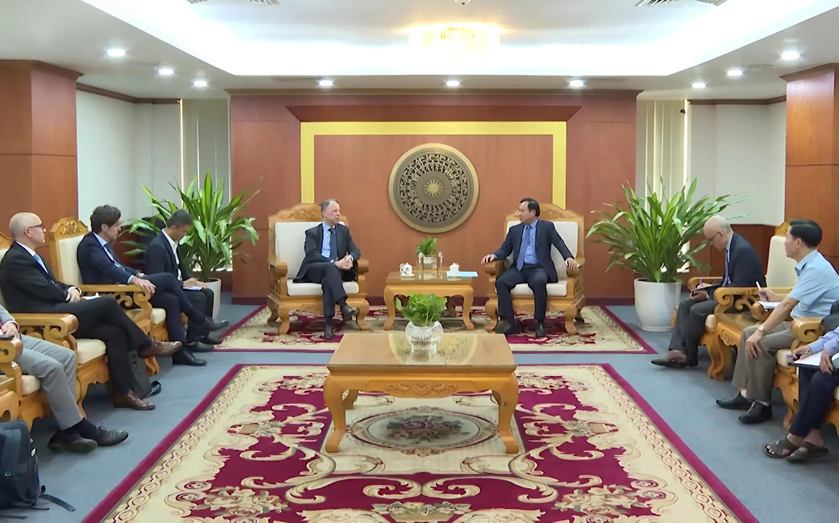
Deputy Minister Vo Van Hung said ENI’s cooperation would support major green initiatives, including low-emission rice, offshore wind, and forest carbon credits
On the Vietnamese side, Deputy Minister Vo Van Hung emphasized that bioenergy plays an important role in the National Power Development Plan VIII, which allocates a substantial share to biomass energy. He described this as a promising direction that should be further researched along two main pathways: utilizing agricultural residues to produce electricity or biogas, and developing oilseed crops specifically for the bioenergy sector. He also suggested conducting further research on Vernicia montana, a native species in central Vietnam known for its ecological benefits and high-value oil used in industry and energy.
However, the Deputy Minister candidly highlighted three critical challenges that must be addressed for this model to scale. First is its economic efficiency compared to other renewable energy sources such as wind and solar. Second is the benefit it brings to farmers, who are the primary participants in production. And third is the implementation model, which must ensure feasibility from small-scale pilots to wide-scale expansion.
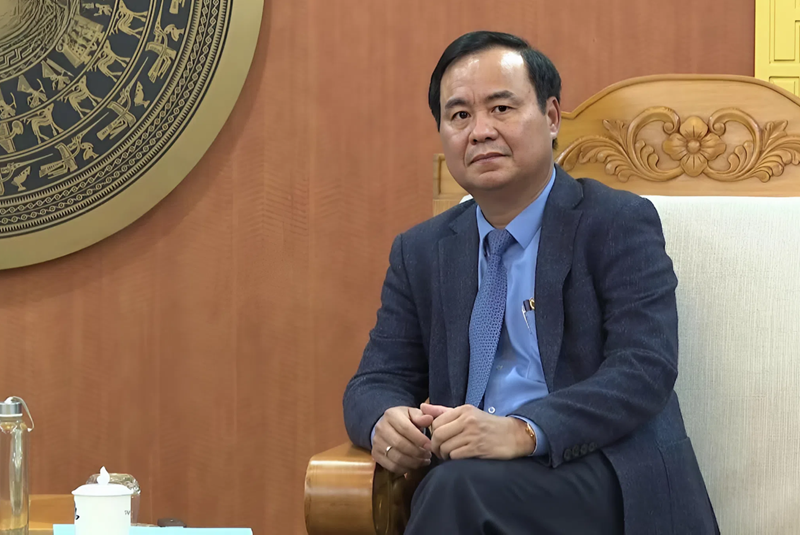
Deputy Minister Vo Van Hung highlighted key green initiatives and expected ENI’s cooperation to boost Vietnam’s low-carbon agricultural transition
He said that if these challenges are effectively addressed, local governments and communities would be ready to join the initiative. He also emphasized the importance of public-private partnerships and close linkages between businesses and farmers in building integrated and sustainable value chains.
ENI’s identification of Vietnam as a strategic market not only underscores the vast potential of the country’s agriculture in the bioenergy sector but also opens up opportunities to develop a new green economic branch—where farmers are not merely producers, but key agents of green transformation. This aligns with Vietnam’s national commitment to achieving net-zero emissions by 2050, as pledged at COP26.
Minh Thao




